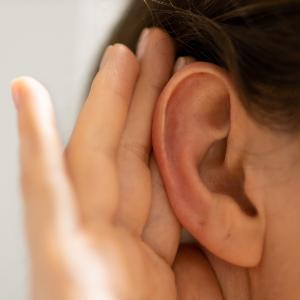
What happens to nerve fibers when only one ear is trained? | © IMAGO / Panthermedia / Audrey Popov
A complex network of nerve fibers and synapses in the brain is responsible for transmission of information. When a nerve cell is stimulated, it generates signals in the form of electrochemical impulses, which propagate along the membrane of long nerve cell projections called axons. How quickly the information is transmitted depends on various factors such as the diameter of the axon. In vertebrates, where the comparatively large brain is enclosed in a compact cranium, another space-saving mechanism plays a major role: myelination. This involves the formation of a biomembrane that wraps around the axon and significantly accelerates the speed of signal transmission. The thicker this myelin sheath, the faster the transmission.
“Even though myelination is an integral part of neural processing in vertebrate brains, its adaptive properties have not yet been comprehensively understood,” says Dr. Conny Kopp-Scheinpflug, neurobiologist at the LMU Biocenter. She is the principal investigator of a study recently published in the journal Proceedings of the National Academy of Sciences (PNAS), which reveals new insights into the principles of myelination. The researchers investigated the question as to how sensory stimulation affects the formation of the myelin layers. “We know that axons which are regularly stimulated have enhanced myelin sheath thickness,” explains Dr. Mihai Stancu, lead author of the paper. Accordingly, regular training improves transmission capability. It was unknown, however, whether this change takes place at the level of individual nerve fibers or if adaptive myelination is also transferred to neighboring, passive axons in a fiber bundle.









